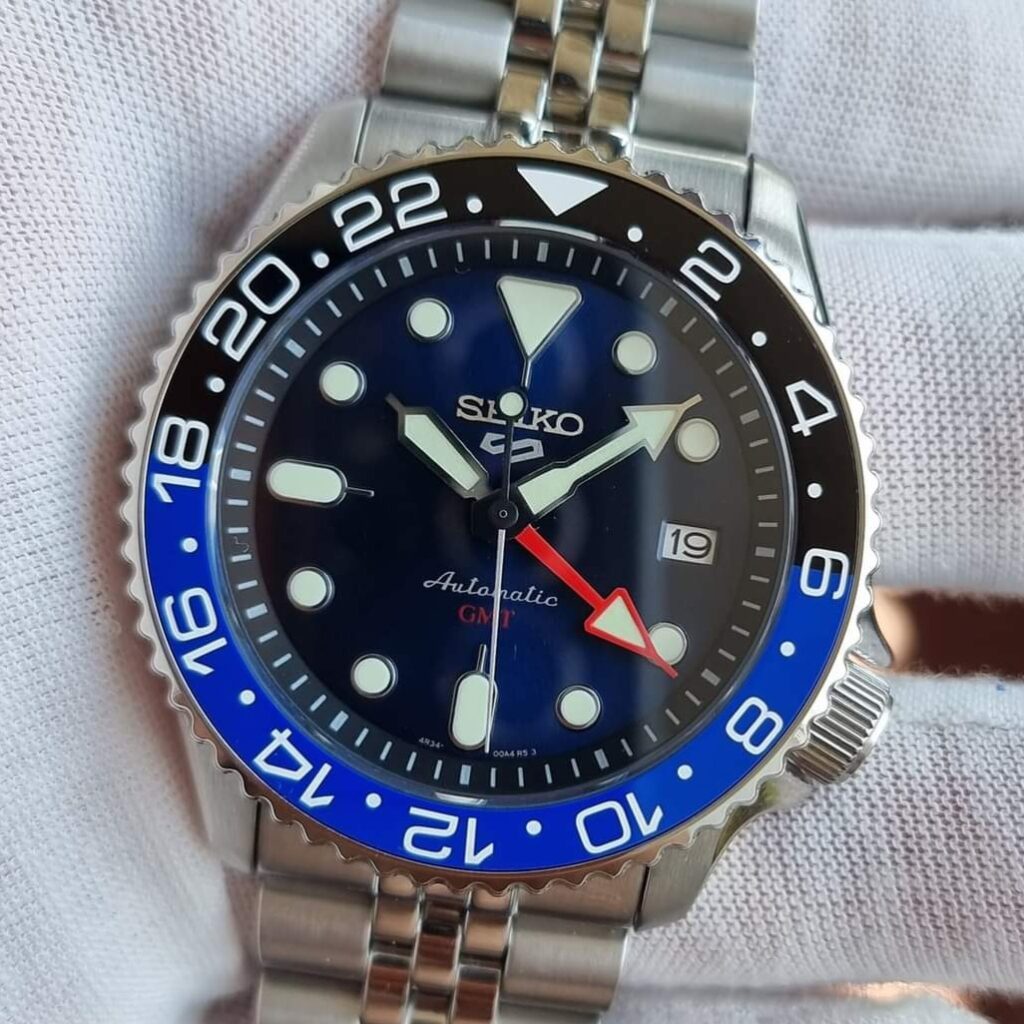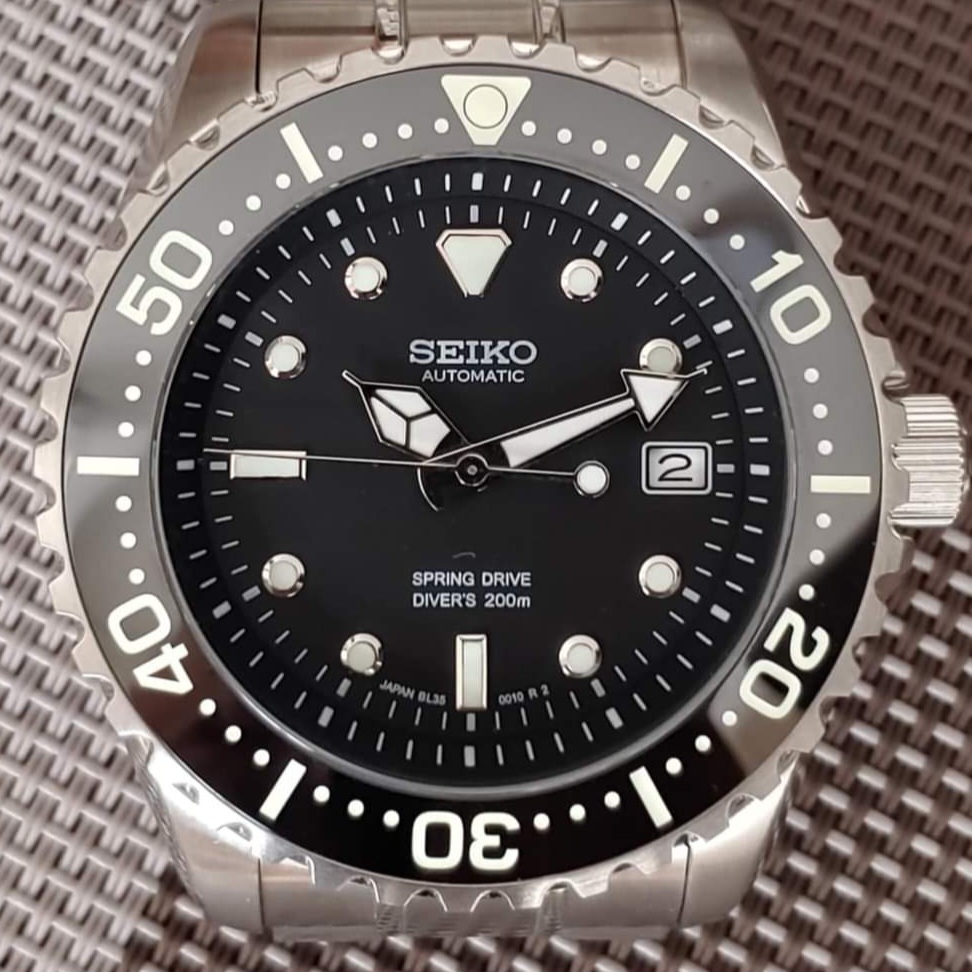Tale 75: Unique Dive Watch Bezels: 10 Must-Know Facts
Table of Contents
Are you ready to dive deep into the world of timepieces? Whether you’re a seasoned watch enthusiast or just dipping your toes into the horological waters, understanding dive watch bezels is crucial for any watch lover. In this comprehensive guide, we’ll explore the fascinating world of dive watch bezels, uncovering their hidden functions and dissecting their intricate designs. Get ready to impress your friends with your newfound knowledge and maybe even discover your next must-have timepiece!
Dive watch bezels are more than just eye-catching accessories; they’re functional tools with a rich history rooted in underwater exploration. These rotating rings surrounding the watch face have been saving lives and timing adventures since the 1950s. But what makes them so special, and why should you care? Let’s plunge into the depths of dive watch bezel knowledge and uncover the secrets that make these timepieces tick.
1. What exactly is a dive watch bezel, and how does it work?
A dive watch bezel is a rotating ring that surrounds the watch face, typically marked with 60-minute graduations. Its primary function is to track elapsed time underwater. Here’s how it works:
- Before diving, align the bezel’s zero marker (usually a triangle or pip) with the minute hand.
- As time passes, the minute hand moves around the dial.
- The bezel remains stationary, allowing you to read the elapsed time directly from its markings.
This simple yet effective mechanism has been a diver’s best friend for decades, ensuring they can keep track of their precious bottom time without relying on complex digital devices.

2. Why do dive watch bezels only rotate counterclockwise?
Safety first! The unidirectional, counterclockwise rotation of dive watch bezels is a crucial safety feature. Here’s why:
- If accidentally bumped, the bezel can only move in a way that shows more time has elapsed.
- This prevents divers from underestimating their dive time, which could lead to dangerous situations.
- It’s a fail-safe mechanism that errs on the side of caution, potentially saving lives.
Remember, when it comes to diving, it’s always better to overestimate your time underwater than to cut it too close.
3. What’s the significance of the first 15 or 20 minutes on a dive watch bezel?
The first quarter of the bezel often features more prominent markings, and there’s a good reason for this:
- Most recreational dives last between 30 to 60 minutes.
- The first 15-20 minutes are crucial for monitoring nitrogen absorption and planning decompression stops.
- These markings allow for more precise timing during the most critical part of the dive.
Some dive watches even feature a different color for this section, making it stand out even more.
4. Can dive watch bezels be used for anything other than diving?
Absolutely! Dive watch bezels are incredibly versatile tools. Here are some everyday uses:
- Timing parking meters
- Cooking and grilling
- Tracking workout intervals
- Monitoring conference call durations
- Timing laundry cycles
The possibilities are endless. Once you start using your bezel for daily tasks, you’ll wonder how you ever lived without it!
5. What materials are commonly used for dive watch bezels?
Dive watch bezels need to be tough to withstand the pressures of underwater use. Common materials include:
- Stainless steel: Durable and corrosion-resistant
- Ceramic: Scratch-resistant and maintains its luster
- Aluminum: Lightweight and often used in more affordable models
- Sapphire: Extremely scratch-resistant but more expensive
Each material has its pros and cons, affecting both the watch’s performance and its price point.
6. How do internal bezels differ from external bezels?
While external bezels are more common, some dive watches feature internal bezels. Here’s how they compare:
External bezels:
- Easy to operate, even with gloves
- More prone to accidental movement
- Can show signs of wear over time
Internal bezels:
- Protected under the crystal
- Operated by a separate crown
- Less likely to be accidentally moved
- Maintain their appearance longer
Both types have their fans, and the choice often comes down to personal preference and specific diving needs.

7. What’s the deal with count-up vs. count-down bezels?
Most dive watch bezels are count-up bezels, but count-down bezels exist too. Here’s the difference:
Count-up bezels:
- Start at zero and count upwards
- Show elapsed time directly
- More common in dive watches
Count-down bezels:
- Start at a predetermined time (e.g., 60 minutes) and count down
- Useful for timing events with a fixed duration
- Less common but preferred by some divers and pilots
Both types serve their purpose, and some watches even offer interchangeable bezels for maximum versatility.
8. How important is lume on a dive watch bezel?
Lume (short for luminescence) is crucial on a dive watch bezel. Here’s why:
- It allows for easy reading in low-light conditions underwater
- The bezel pip (zero marker) is often the brightest point for quick reference
- Some watches feature fully lumed bezels for maximum visibility
Quality lume can make the difference between a good dive watch and a great one, especially for night diving enthusiasts.
9. Are there any innovations in dive watch bezel technology?
The world of dive watch bezels is constantly evolving. Some recent innovations include:
- Ceramic bezels with liquid metal numerals for enhanced durability and legibility
- Bezels with built-in depth gauges
- Digital bezels on hybrid analog-digital dive watches
- Bezels with multiple functions, such as compass bearings or decompression tables
These advancements show that even a seemingly simple component like a bezel can be reimagined and improved upon.
10. How do I maintain my dive watch bezel?
Proper maintenance can keep your dive watch bezel functioning perfectly for years. Here are some tips:
- Rinse your watch with fresh water after every dive or swim
- Clean the bezel regularly with a soft brush to remove debris
- Check the bezel action periodically to ensure smooth rotation
- Have your watch serviced by a professional according to the manufacturer’s recommendations
With proper care, your dive watch bezel will continue to serve you well, both underwater and on land.

Conclusion
Dive watch bezels are more than just functional tools; they’re a testament to human ingenuity and our enduring fascination with exploring the depths. From their humble beginnings in the 1950s to the high-tech versions we see today, these rotating rings have played a crucial role in keeping divers safe and on schedule.
But the appeal of dive watch bezels extends far beyond the diving community. Their versatility and practicality have made them indispensable tools for everyday life. Whether you’re timing your pasta to perfection or keeping track of a crucial presentation, a dive watch bezel can be your silent partner in productivity.
As we’ve explored in this article, the world of dive watch bezels is rich with variety. From materials and designs to innovative features, there’s a dive watch out there for every taste and need. The unidirectional rotation, the prominent markings, and the luminous elements all come together to create a tool that’s as functional as it is beautiful.
For watch enthusiasts, understanding the intricacies of dive watch bezels opens up a whole new dimension of appreciation. It’s not just about how a watch looks on your wrist; it’s about the engineering, the history, and the potential adventures that each timepiece represents.
As we look to the future, it’s clear that dive watch bezels will continue to evolve. With advancements in materials science and digital technology, we can expect to see even more innovative designs and functions. But no matter how sophisticated they become, the core principle will remain the same: providing reliable, easy-to-use timing in even the most challenging conditions.
So, whether you’re a seasoned diver, a watch collector, or someone who appreciates functional design, take a moment to appreciate the humble dive watch bezel. It’s a small component that tells a big story – of human exploration, of precision engineering, and of the enduring appeal of a well-crafted timepiece.
The next time you glance at your watch, remember the incredible history and functionality packed into that rotating ring. And who knows? You might just find yourself inspired to take on your next adventure, knowing you’ve got a reliable timing companion right there on your wrist.
- Tale 75: Unique Dive Watch Bezels: 10 Must-Know FactsTale 75: Unique Dive Watch Bezels: 10 Must-Know Facts Are you ready to dive deep into the world of timepieces? Whether you’re a seasoned watch enthusiast or just dipping your toes into the horological waters, understanding dive watch bezels is crucial for any watch lover. In this comprehensive guide, we’ll explore the fascinating world of… Read more: Tale 75: Unique Dive Watch Bezels: 10 Must-Know Facts
- Tale 74: 10 Affordable Watch Upgrades: A Budget-Friendly GuideTale 74: 10 Affordable Watch Upgrades: A Budget-Friendly Guide Are you looking to breathe new life into your beloved watch without breaking the bank? You’re in the right place! In this comprehensive guide, we’ll explore ten affordable watch upgrades that can enhance your timepiece’s appearance, functionality, and overall value. Whether you’re a seasoned collector or… Read more: Tale 74: 10 Affordable Watch Upgrades: A Budget-Friendly Guide
- Tale 73: Luxury Watch Investing: How to Build a Valuable CollectionTale 73: Luxury Watch Investing: How to Build a Valuable Collection Investing in luxury watches has become an increasingly popular avenue for wealth preservation and growth. The luxury watch market is not only about aesthetics and craftsmanship; it also represents a unique investment opportunity that can yield substantial returns. As collectors and investors alike seek… Read more: Tale 73: Luxury Watch Investing: How to Build a Valuable Collection
- Tale 72: Automatic Watch Accuracy: How to Maintain PrecisionTale 72: Automatic Watch Accuracy: How to Maintain Precision In the world of horology, automatic watches stand out for their intricate mechanics and the artistry involved in their craftsmanship. However, many enthusiasts and potential buyers often ponder a crucial question: How accurate are automatic watches, and how can one maintain their precision? This blog post… Read more: Tale 72: Automatic Watch Accuracy: How to Maintain Precision
- Tale 71: Watch Mods: How to Elevate Your Look with Wave DialsTale 71: Watch Mods: How to Elevate Your Look with Wave Dials In the world of horology, watch modifications—or “watch mods”—have emerged as a popular way for enthusiasts to personalize their timepieces. Whether you’re looking to enhance functionality, aesthetics, or both, modding allows you to create a unique watch that reflects your style. One standout… Read more: Tale 71: Watch Mods: How to Elevate Your Look with Wave Dials
